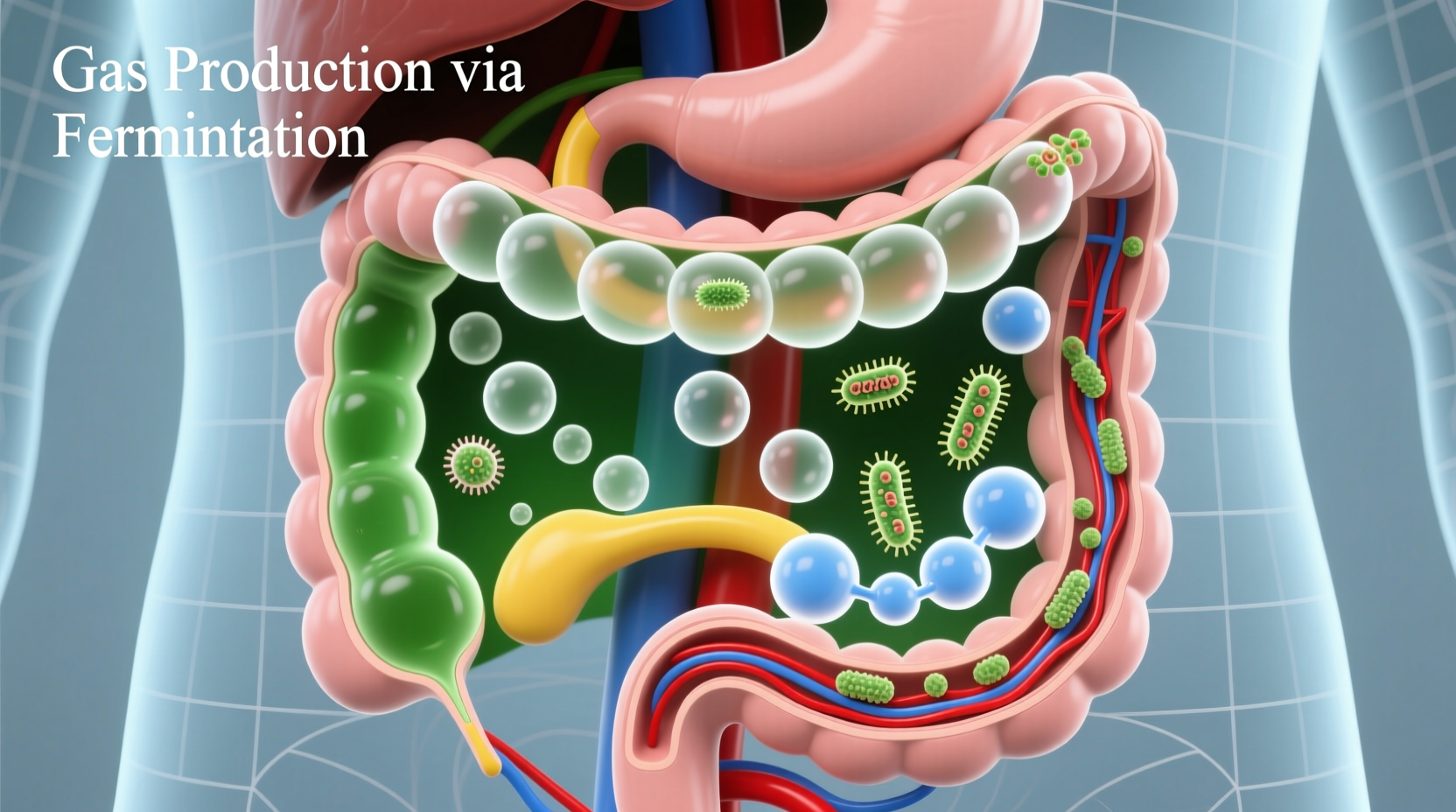Experiencing occasional flatulence is completely normal—most people pass gas 14-23 times daily. Understanding exactly what foods cause flatulence and why they trigger this natural digestive process can help you manage discomfort without sacrificing nutritional benefits. This guide reveals science-backed insights about gas-producing foods, explains individual variations in reactions, and provides practical strategies to enjoy these healthy foods with less discomfort.
The Science Behind Food-Induced Gas Production
Flatulence occurs when gut bacteria ferment undigested carbohydrates in your large intestine. While your small intestine digests most nutrients efficiently, certain complex carbohydrates resist breakdown until they reach your colon. There, trillions of bacteria feast on these leftovers, producing hydrogen, methane, and carbon dioxide as byproducts.
According to the National Institute of Diabetes and Digestive and Kidney Diseases, foods containing specific carbohydrates called FODMAPs (Fermentable Oligosaccharides, Disaccharides, Monosaccharides, and Polyols) are primary culprits. These short-chain carbohydrates draw water into the intestine and ferment rapidly, causing both gas and bloating.

Top Gas-Producing Foods and Why They Trigger Flatulence
Not all gas-producing foods affect everyone equally. Your unique gut microbiome composition determines your specific reactions. However, certain food categories consistently rank highest for causing flatulence across most populations.
| Food Category | Common Gas-Producing Examples | Gas Potential | Key Compounds |
|---|---|---|---|
| Legumes | Beans, lentils, chickpeas | ★★★★★ | Raffinose, stachyose |
| Cruciferous Vegetables | Broccoli, cauliflower, cabbage | ★★★★☆ | Raffinose, fiber |
| Dairy Products | Milk, ice cream, soft cheeses | ★★★☆☆ | Lactose (for lactose intolerant) |
| High-Fructose Fruits | Apples, pears, mangoes | ★★★☆☆ | Sorbitol, fructose |
| Wheat Products | Bread, pasta, cereals | ★★★☆☆ | FODMAPs, gluten (for sensitive) |
Legumes: The Gas Production Champions
Beans consistently top lists of what foods cause flatulence most dramatically. The Mayo Clinic identifies legumes as containing raffinose—a complex sugar humans lack the enzyme to break down. When beans reach your colon undigested, bacteria ferment raffinose vigorously, producing significant gas. Soaking dried beans for 8-12 hours and changing the water before cooking can reduce gas-producing compounds by up to 30%.
Cruciferous Vegetables: Nutrient Powerhouses With Side Effects
Broccoli, cauliflower, and Brussels sprouts contain both raffinose and high fiber content. While fiber promotes healthy digestion, sudden increases can overwhelm your system. The International Foundation for Gastrointestinal Disorders notes that cooking these vegetables thoroughly breaks down some complex carbohydrates, reducing their gas-producing potential while preserving nutrients.
Why Your Gas Reaction Differs From Others
Individual responses to gas-producing foods vary significantly due to several factors:
- Gut microbiome composition: Your unique bacterial ecosystem determines which foods ferment most intensely
- Enzyme production: Lactase deficiency affects 65% of the global population to varying degrees
- Digestive transit time: Faster movement means less complete digestion before reaching the colon
- Dietary adaptation: Regular consumption of high-fiber foods trains your gut to handle them better
A 2022 review by the American Gastroenterological Association found that people who gradually increased fiber intake over 6 weeks experienced 40% less gas than those who made sudden dietary changes. This adaptation period allows beneficial bacteria to adjust their populations for more efficient fermentation.
Practical Strategies to Reduce Gas While Eating Healthy Foods
You don't need to eliminate nutritious gas-producing foods—just manage them strategically:
Smart Preparation Techniques
Soaking beans with a pinch of baking soda, cooking vegetables until tender, and removing onion skins completely can reduce gas compounds. The enzyme alpha-galactosidase (sold as Beano) breaks down complex sugars in legumes and cruciferous vegetables before they reach your colon.
Gradual Dietary Introduction
Start with small portions of high-fiber foods and increase slowly over weeks. A University of Michigan study showed that people who added just 5 grams of fiber daily experienced significantly less gas than those jumping to high-fiber diets immediately.
Strategic Food Pairing
Combining gas-producing foods with carminative herbs like ginger, fennel, or peppermint can reduce discomfort. Traditional cooking methods often incorporate these pairings naturally—think of Indian dal with cumin or Mediterranean bean dishes with rosemary.
When Gas Signals Something More Serious
While occasional flatulence is normal, consult a healthcare provider if you experience:
- Sudden, dramatic increase in gas frequency
- Gas accompanied by abdominal pain, diarrhea, or weight loss
- Gas that significantly disrupts daily activities
These could indicate underlying conditions like irritable bowel syndrome (IBS), small intestinal bacterial overgrowth (SIBO), or food intolerances requiring medical evaluation.
Managing Expectations Around Flatulence
Complete elimination of gas isn't possible or desirable—your gut bacteria need to ferment some fiber to produce beneficial short-chain fatty acids. The goal is comfortable management, not total prevention. Most people can identify their personal trigger foods through an elimination diet followed by systematic reintroduction.











 浙公网安备
33010002000092号
浙公网安备
33010002000092号 浙B2-20120091-4
浙B2-20120091-4